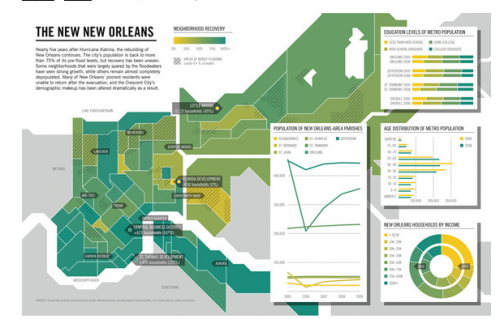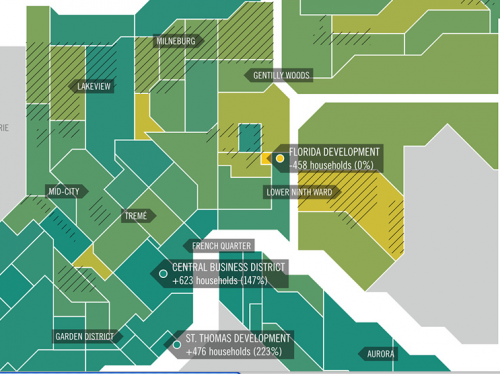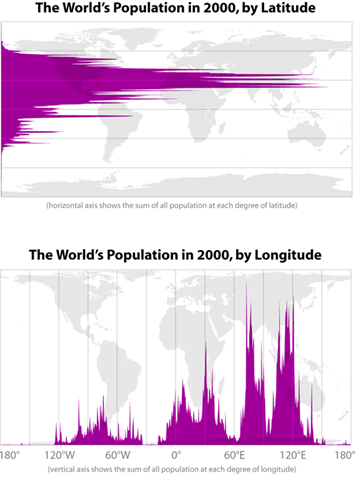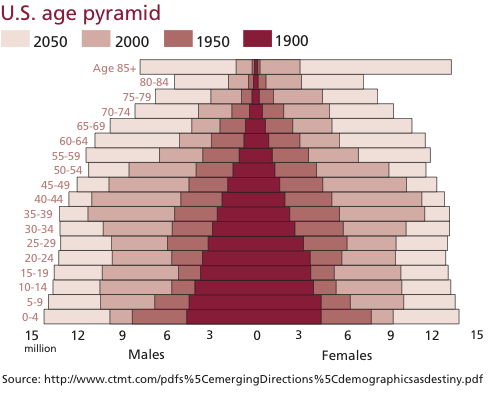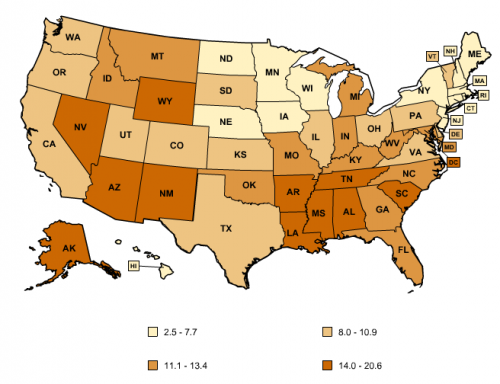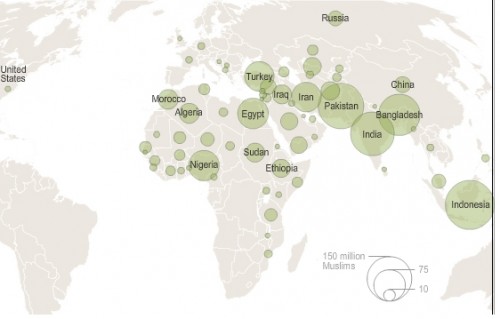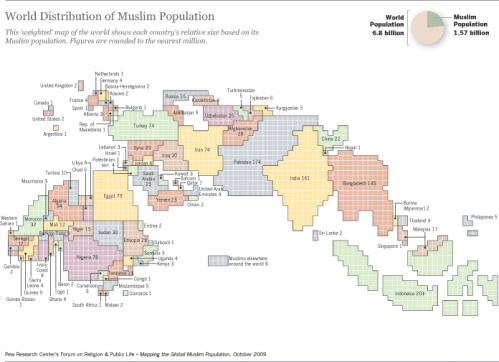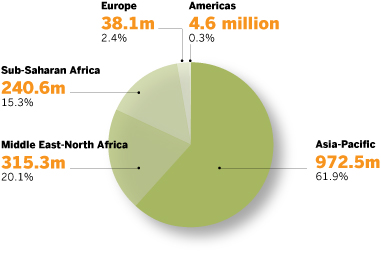Allie B. sent us a link to an image at GOOD that presents some pre- and post-Katrina information about New Orleans. The map indicates levels of population recovery; the darker the shade of green, the more the population has rebounded:
A close-up of one section (areas with black shading had over 6 feet of floodwater):
Notice that the Lower Ninth Ward, one of the hardest-hit areas, has among the lowest level of redevelopment.
There’s a much larger version of the map (with a not-too-specific list of sources) here.
Changes in the populations of different parishes:
The income distribution has changed somewhat as well, with a smaller proportion in the lowest income categories (though notice that the dollar range included in each color isn’t consistent as you get into the higher incomes):

